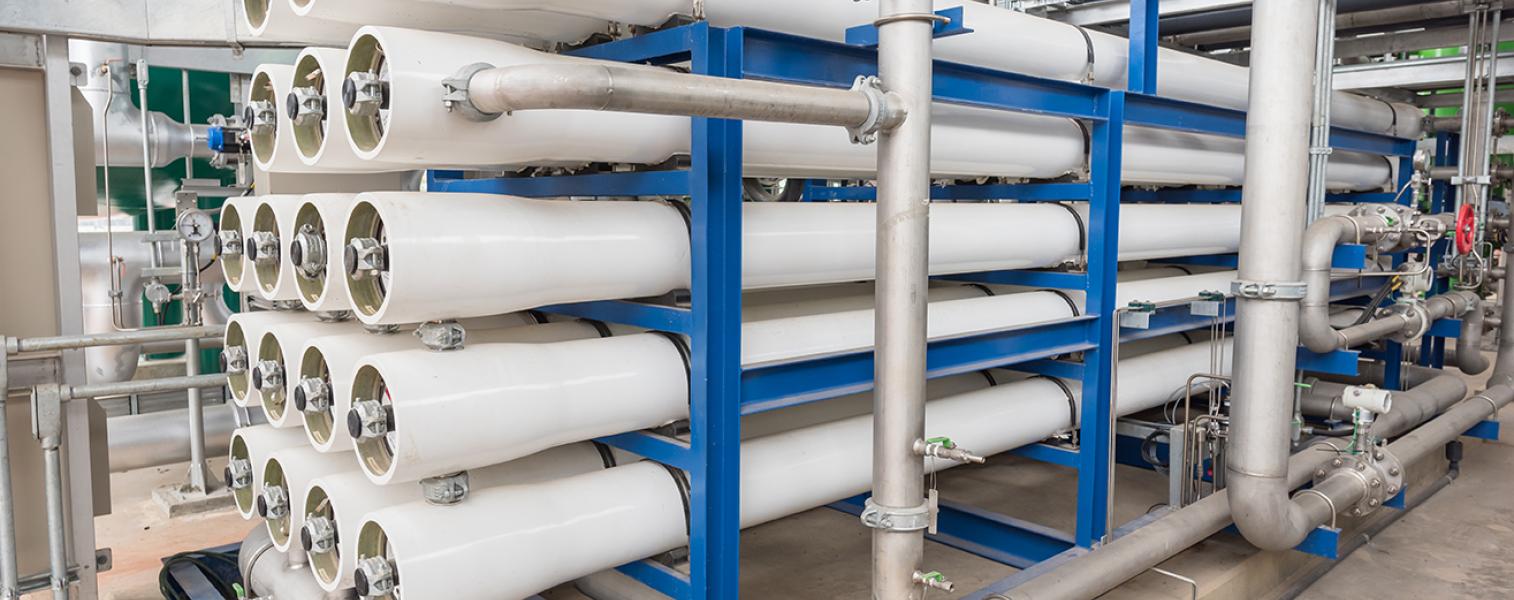Reverse Osmosis Wastewater Treatment: A Growing Solution for Clean Water
Over the years, the popularity of reverse osmosis (RO) as a water and wastewater treatment method has grown significantly. This trend is due to the many advantages the process holds over other treatments. As these advantages become more widely known and the technology continues to improve, it is likely that RO will serve an even larger role in water and wastewater treatment operations in the future.
How Does Reverse Osmosis Wastewater Treatment Work?
Reverse osmosis is a treatment method that employs a high-pressure pump and semi-permeable membranes to remove contaminants from the feedwater. The pressure applied by the pump counteracts the natural osmotic pressure, resulting in the feedwater separating into clean water (which passes through the membrane) and contaminants larger than a certain size (which remain on the membrane).
Advantages of Reverse Osmosis as a Treatment Process
Compared to other water and wastewater treatment processes, reverse osmosis has numerous advantages, such as:
- Better contaminant removal. Compared to the membranes used in ultrafiltration treatments, the ones in reverse osmosis treatments are much tighter. This design difference enables RO membranes to remove a greater amount of contaminants from the water/wastewater. They can be used to reduce the level of contaminants (e.g., dissolved solids, minerals, organics, and pathogens) by up to 99%.
- Greener treatment solution. Unlike other water/wastewater treatment processes, reverse osmosis does not require the use of chemicals to remove contaminants. As a result, the disposal process for used treatment materials and waste is much easier.
- Safer working conditions. Since RO does not use hazardous chemicals, it is much safer for workers than chemical-based treatment methods.
- Easier maintenance requirements. Industrial RO water systems are relatively easy to use and maintain since they generally come as self-contained, self-cleaning units. They can be operated with minimal user involvement and serviced quickly and easily.
- Lower costs. The price of materials for reverse osmosis is falling, while the price of chemicals for other treatments is rising. Additionally, besides the materials, the only other recurring primary cost for reverse osmosis systems is electricity. As RO technology advances, it is able to operate with very little energy consumption.
Given the many advantages reverse osmosis boasts, it is no surprise that many facilities are turning to the method for treating water and wastewater.
The Future of RO in the Water and Wastewater Treatment Industry
In addition to its numerous advantages, reverse osmosis also holds a few disadvantages, such as:
- Low processing efficiency. Most industrial RO systems waste 20 gallons of water to produce 1 gallon of clean water.
- High pretreatment costs. The pretreatment of feedwater is necessary to ensure an RO system operates properly. While the operating costs for an RO system are relatively low, the operating costs for a pretreatment system are relatively high.
However, in recent years, industry experts have worked to overcome these disadvantages to make RO an even more effective and efficient treatment process. For example:
- Watts Industries’s ZeroWaste® systems and Desalitech’s Closed Circuit Desalination (CCD) systems are designed to return water to the beginning of a closed system or loop. This design ensures less water is lost and wasted during treatment operations.
- The use of ultrafiltration and nanofiltration systems for pretreatment operations has helped/is helping to reduce pretreatment costs.
With developments like these, the future of RO technology looks bright as many water and wastewater treatment applications will benefit from the more efficient and effective systems.
Frequently Asked Questions
Why is Reverse Osmosis Water A Green Solution For Industrial Water Treatment?
By purifying wastewater before it goes down the drain, reverse osmosis wastewater treatment is a greener water solution that meets water regulations. Reverse osmosis does not use chemicals to treat wastewater, and its cleverly designed membranes are the superior option for industrial water treatment.
What Contaminants Does Reverse Osmosis Remove?
Reverse osmosis wastewater treatment can remove up to 99% of dissolved salt ions, colloids, organics, particles, bacteria, and pyrogens from feed water. The specialized membranes in reverse osmosis reject contaminants based on their size and charge. A properly running RO system will reject contaminants with a molecular weight greater than 200.
Is Reverse Osmosis Suitable for All Industries?
Reverse osmosis wastewater treatment is particularly effective at treating both surface and groundwater for large and small flow applications. The reason so many industries use RO water is because of its clarity, effectiveness, and greener process. Pharmaceutical, boiler feed, metal finishing, food & beverage, and semiconductor manufacturing all use RO water.
Quality RO Systems From MacDermid Envio Solutions (MES)
Need a quality reverse osmosis system for your water or wastewater treatment operation? Turn to the experts at MES. We’ll work with you to create an equipment solution that meets your discharge needs and integrates with your existing workflows. To learn more about our treatment solutions or discuss your requirements with one of our team members, contact us today.
Written by a MacDermid Envio Solutions Subject Matter Expert
